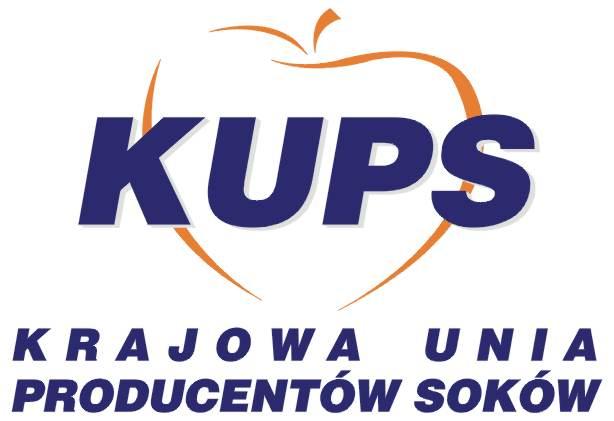ECONOMY
- 4 Role of Innovations in Transformation of Food Systems – Renata Grochowska (DOI 12.15199/65.2019.9.1)
Food systems are characterized by a gradual introduction of innovations (called as incremental innovations), consisting of constant product or process improvement, which do not differ significantly from well-known solutions in a given sector. Imitation (adaptation) of various types of innovation may, however, prove to be insufficient in the future. A more effective strategy would be to become involved in the p rocesses of generating innovations that are more effective in the conditions of growing volatility of the environment. A significant help in this regard can be the transition from a linear to a multi-network model of food systems functioning. The article shows the diversity of innovations in food systems at present and potential changes based on future scenarios, as well as selected innovative solutions, seen as leading in the transformation of food systems in the coming years
KEY WORDS: innovations, food systems
- 9 Certified Palm Oil in 2019 – Krzysztof Krygier, Anna Florowska
Palm oil is the most consumed fat in the world. In addition to very wide use in the food industry, it is also often used in the chemical, feed, cosmetics and biofuel production (biodiesel). This widespread use of palm oil is primarily due to its very high efficiency in obtaining oil from palm oil fruits, and therefore the low price as well as its unique properties. Its main advantage is the possibility of replacing harmful hydrogenated fats with trans isomers by natural vegetable oil. Despite this, palm oil is often criticized, mainly because of the destruction of the environment as a result of burning tropical forests for palm plantations. However, this situation has changed in recent years, among others thanks to RSPO oil certification.
KEY WORDS: palm oil, certification, 3 MCPD
LAW
- 15 The Current Issues Regarding Food Additives in The European Union – Joanna Gajda-Wyrębek, Jolanta Jarecka, Marta Dmitruk (DOI 12.15199/65.2019.9.2)
The programme for the re-evaluation by EFSA of food additives in the European Union in many cases resulted in changes to EU food additive legislation. As the examples, the issue of two colours – annatto E 160 b and titanium dioxide E 171 are presented in the article. In the addition, common interpretation of food additive limits in food supplements intended to be dissolved before the consumption are described. The issue of the use in food of plant extracts rich in some substances (e.g. nitrites), which can perform technological functions in the final product, was also raised in the article.
KEY WORDS: food additives, food supplements, vegetable extracts
- 20 New Legal Requirements Regarding the Content of GMOs in Feed and Food and Analytical Capabilities – Lech Michalczuk, Andrzej Babuchowski (DOI 12.15199/65.2019.9.3)
The provisions of the Act on the labeling of products produced without the use of genetically modified organisms significantly reduces their permissible level. This causes both technical and administrative complications in their determination. The 0.1% threshold used is the detection limit of the methods previously used. The standard deviation of the mean ± 25% is allowed in the analytical methods approved by European Union Reference Laboratory for GM Food & Feed EURL), however in interlaboratory tests it was often over 60%. Thus, the results obtained in various laboratories based on the same methodologies approved by LRUE may differ by up to several dozen percent, which may results in legal disputes. An additional source of error in the determination of GMOs may be heterozygosity of seeds of transgenic plants related to the transgene additionally complicated by different number of copies of the genome occurring in different parts of the grain and thus in foods and feeds produced from them. Even more problematic is detection of genetic modifications introduced into the genomes of crop plants through site-directed mutagenesis, which according to the recent ruling of the Court of Justice of the EU is also considered to be GMOs, but for which there are not yet validated and approved by LRUE detection methods.
KEY WORDS: GMO, genetic transformation, site-directed mutagenesis, limit of detection and quantification
TECHNICS – TECHNOLOGY
- 26 Selected Enzymes of Microbiological Origin Used in The Food Industry – Monika Pytka, Piotr Janas, Monika Kordowska-Wiater (DOI 12.15199/65.2019.9.4)
There is a high demand for enzymatic proteins in modern food production. They are used to increase the efficiency and profitability of traditional production, as well as to obtain new products with interesting functional and sensory properties. Enzymes are present in the natural environment, where they are synthesized by various organisms. They are necessary catalysts of all biochemical reactions. They are characterized by high specificity and substrate selectivity, which guarantees high product quality. The enzymes that hydrolysing cheap starch and cellulosic raw materials, pectins and β-glucans are particullary needed in some of food industry branches, e.g. brewing, baking, or fruit and vegetable industry. Biotechnological production, which guarantees fast, cheap and very efficient biosynthesis of enzymes, can meet the increased demand for enzymatic products.
KEY WORDS: food enzymes, amylases, xylanases, cellulases, pectinases, ß-glucanases
FOOD – FEEDING
- 31 Consumer Awareness of Healthy Eating – Magdalena Siuba-Strzelińska (DOI 12.15199/65.2019.9.5)
Healthy eating is an integral part of the prevention and treatment of diet-related diseases. Consumers’ awareness of the importance of healthy lifestyles for maintaining health seems to be high, but it is not visible in the implementation of healthy behaviors in everyday life. The article compares consumer opinions regarding the declared diet with the actual implementation of recommendations and the health situation in Poland and in the world. Sources of knowledge about nutrition, which are most often used by Poles, were also pointed out, and an attempt was made to analyze the factors responsible for choosing food products on the food market, taking into account consumers’ perception of factors related to food safety.
KEY WORDS: diets, consumer behavior, food safety
- 34 Fruit Juices as a Source of Bioactive Ingredients – Zuzanna Walczak, Stanisław Kalisz (DOI 12.15199/65.2019.9.6)
The aim of the article was to analyze the abundance of exemplary fruit juices in biologically active compounds, such as phenolic compounds and ascorbic acid. The article discusses issues such as the production of juices and their division into different types, characteristics and occurrence of biologically active compounds, as well as their losses as a result of technological processes. Trends on the fruit juice market were also analyzed. Based on the available literature, it was found that juices, especially NFC ones, are a good source of biologically active compounds. It has been confirmed that fruit juices should be included in the diet in order to increase the intake of pro-health substances. Juices can be one of the daily portions of fruit and vegetables.
KEY WORDS: fruit juices, mixed juices, NFC, bioactive compounds, polyphenols
- 40 The Role of Nutraceuticals in The Treatment of Dyslipidemia as A Part of Prevention of Cardiovascular Diseases – Beata Bondyra-Wiśniewska, Izabela Przybysz, Agnieszka Jarosz (DOI 12.15199/65.2019.9.7)
Cardiovascular diseases (CVD) constitute a serious civilization problem. They have been a major cause of premature deaths in the world for many years, and dyslipidemia is the most frequently occurring modifiable cardiovascular risk factor. The purpose of CVD prevention and treatment is to focus on normalizing the value of lipids and lipoproteins in blood. The article presents evidence of the action of selected nutraceuticals, such as β-glucan, plant sterols and stanols, n-3 polyunsaturated fatty acids, polyphenols and red yeast rice, directed to prevention and treatment of the cardiovascular diseases by influencing the parameters of lipid profile. Available scientific data confirm their effectiveness. The use of nutraceuticals, along with a properly composed diet, is a significant element in the prevention and treatment of cardiovascular diseases.
KEY WORDS: nutraceuticals, cardiovascular diseases, dyslipidemia, pro-health influence
EVENTS
- 2 II edition of TechFood Practic
- 8 The importance of producer organizations and operational programs in the development of the fruit and vegetable sector
- 14 New version of the PIM Standard
- 19 The album „A painting story about Polish bread” A retrospective meeting
- 32 New plastics technologies




